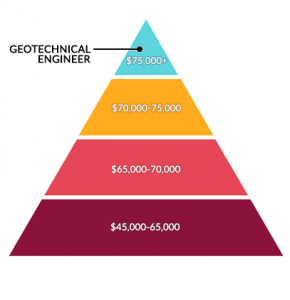Things about Geotheta
Things about Geotheta
Blog Article
All about Geotheta
Table of ContentsAn Unbiased View of GeothetaLittle Known Questions About Geotheta.Excitement About GeothetaThe Definitive Guide to Geotheta
They collaborate with civil designers, structural designers, engineers, and other specialists to integrate geotechnical considerations right into the general project style and building and construction procedure. This needs efficient synergy, control, and interaction to ensure that the geotechnical elements align with the project goals and satisfy governing requirements.Mining & Products Design: Concepts of exploration, infiltration prices, and elements affecting the selection of exploration approach. Qualities of dynamites, firing systems and blast patterns. Blowing up methods in surface area and underground workings. Special blasting methods at excavation perimeters. Resonance and noise control. Mechanical and continual strategies to fragmentation, including longwall shearing and fullface boring.
Modelling of fragment and particle size circulations; comminution as a transfer function. Comminution innovation: squashing, grinding, size classification. Integrated analysis of fragmentation and comminution procedures. Supplied by: Mining & Materials Design.
6 Easy Facts About Geotheta Explained
Bachelor's degree programs in civil, geotechnical, geological, and environmental engineering normally last 4 years and include basic education training courses in English, social scientific research, and the liberal arts, as well as courses in sophisticated mathematics, structural geology, and fluid mineralogy. (https://www.producthunt.com/@geotheta1)
Geotechnical engineering entails the assessment of the soil and rock conditions at a specific website, and their implications for the advancement of that website. As the majority of structures depend on the ground for assistance, it is without surprise that a comprehensive understanding of the ground problems, and the viability of structure systems, are vital to the long-term stability and performance of the building or structure.
Specialising in the examination of geological developments and ground practices, geotechnical designers perform scientific investigations and testing to comprehend the effect these geological developments might carry the layout and building of structure, civil and infrastructure tasks. This experience is crucial for the design and building of buildings, roads, tunnels, dams, bridges, and supply of water and sewer systems.
The geotechnical group at Douglas Allies regularly seek advice from with designers, design engineers, developers, and builders to make recommendations on layout and growth propositions to make sure that the developed structures are suitably designed for the ground problems. As an example, the style of footing systems needs to consider the weight of the framework, the capacity of the ground to sustain that weight along with movement resistances and reliable building.
How Geotheta can Save You Time, Stress, and Money.
This task is substantially simplified by the use our Douglas Map geospatial platform that makes this information easily available in a very easy to use internet internet browser interface. A geotechnical designer will guide the drilling of boreholes and test pits to gather soil and various other examples, and likewise evaluate surface area features and ground exposures to create a geotechnical model of the subsurface problems.
Relying on the project type and ground problems encountered, lab testing might among other points analyze stamina, compressibility, sensitivity and/or leaks in the structure of soil and rock samples. After this information is accumulated and looked at, the results are used for a geotechnical design of the website, which is typically provided as sections across the website.

A geotechnical examination naturally can just assess the ground conditions at the places drilled or excavated. Natural variants in dirt and rock problems can happen throughout a website and in between examination places. It is as a result excellent technique that the geotechnical designer be preserved throughout building and construction of the project to provide on-site verification that the ground conditions encountered follow the expectations and suggestions provided in the geotechnical investigation report.
Some Known Questions About Geotheta.
Geotechnical designers use their in-depth expertise of dirt and rock to evaluate threat and fix problems on varied facilities projectsGeotechnical design is a specialist branch of civil design which takes a look at the behaviour of planet materials and the application of soil and rock auto mechanics. Engineer of Record. As a geotechnical designer, you will that site assess the physical, mechanical and chemical buildings of soil and rock in order to design structures, retaining frameworks and earthworks
Geotechnical engineering is carefully connected to and overlaps with, both engineering geology and ground design - https://geotheta.blog.ss-blog.jp/2024-08-02?1722614750. It's feasible to be experts in geotechnics or work for a geotechnical company yet be recognized as an engineering geologist or a ground designer. As a geotechnical engineer, you'll need to: build and keep connections with clients and various other experts associated with the website, throughout each projectmaintain safety standards on website bear in mind price ramifications when you make recommendationsstudy geological maps and aerial pictures from a series of resources and from different time periodsexamine construction intends to see how viable they are based on your understanding of the siteinvestigate threats or geological dangers for the sitesearch for environmentally delicate attributes, such as landfill beginning to establish valid and interpretive ground modelsplan area investigationsdrill and analyse examples of bedrock, dirt, groundwater and extra products monitor various other experts on sitesolve technological issues as they emerge, such as unexpected frameworks at drill sitesmonitor conditions throughout and after construction to see to it frameworks are stable in the short and lengthy termadding data gathered on website to your initial researchcreating geotechnical computations, illustrations, and 2 or three-dimensional computer designs analyzing the datamaking recommendations regarding the recommended use the site

Report this page